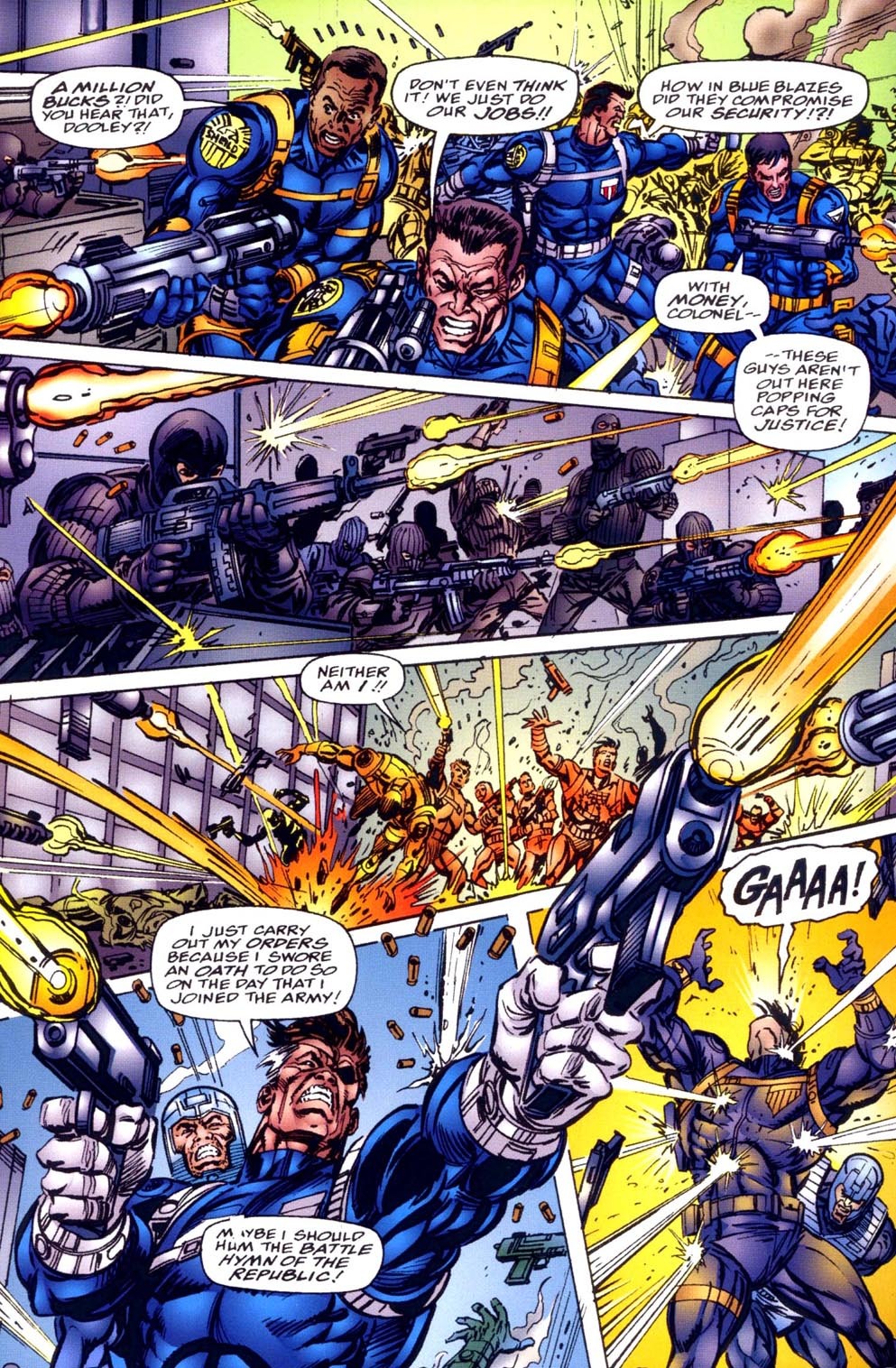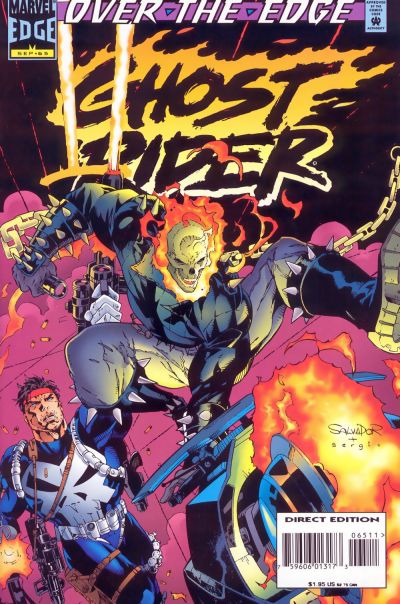

This extended story was about terrorists who wanted to smoke the shoes of SHIELD agents.
Ahem. No it wasn’t.
SHIELD finally has Punisher in custody, when the helicarrier is invaded (again) by an army hired by Rosalie Carbone–a mafia daughter whose father was killed by Punisher. The mafia group–remarkably–is successful, and captures Castle.

Only it’s not Punisher. It’s a life model decoy.
What they didn’t know was that Punisher was in a hidden location undergoing a special brainwashing being done by Doc Samson, but which also had been sabotaged by Spook.

Part of the therapy, apparently, involves beating the crap out of the patient. Of course Frank escapes therapy, and finds himself with a broken brain that believes Nick Fury–not a mob leader–killed his family so many years ago.
In Daredevil #344, the deranged Punisher decides that revenge against Fury means killing Mikel Fury–Nick’s son.

Which he does in fact seem to do, and then Daredevil stops him from killing Nick Fury. It’s never clearly explained, but we soon know that Mikel wasn’t killed.
We then move to Doctor Strange.

Doctor Strange?!?
Yeah. But only loosely. Nick Fury goes to him to track down Doctor Strange. Along with that tie-in, Doctor Strange #81 continues Warren Ellis’ storyline involving chaotic, eerie evil in Manhattan. And also Wong is mad at Doctor Strange–he blames Strange for the death of his beloved several issues ago–and Doc seeks to resurrect her to earn back Wong’s friendship. That story continues in Doctor Strange #82.
So basically, both Wong and Punisher wrongly blame a hero for the death of loved ones. That’s the tie-in, I guess.

Similar to the narrative parallel that loosely tied Strange to this event, Ghost Rider (like Punisher) is captured by SHIELD and escapes. After fighting Scarecrow, he decides that he–like Punisher–wants to get revenge on Fury.
Ghost Rider isn’t a killer. But Punisher is.

And he kills Spook.
The Hulk tie-in is even more tenuous, and doesn’t advance the storyline at all. All it does is slow down Peter David’s great run.

Double Edge is the big finale. And let’s cut to the chase: Punisher “kills” Nick Fury (no he doesn’t). He’s captured, and sentenced to death.
It leads to the launch of a new Punisher ongoing series, which will turn out to be one of the better ones (of the many, many Punisher ongoings since the 1990s).
Overall, there’s a lot of good stuff in this story: The effects of brainwashing and the implications of SHIELD/Nick Fury’s constant over-reach. Punisher on a mad tear across the Marvel Universe. It would (and should) have been much better if it had not tried to create a new “mini-universe” of titles and instead had been focused in Punisher’s own comics–so that the story could drive what comics it appeared in. But it’s the mid-’90s, and Marvel is throwing anything it can at the wall in the hopes of staving off bankruptcy.
They’ll fail at that.
